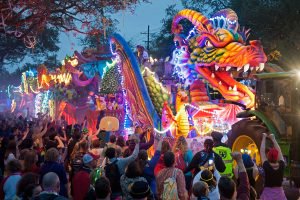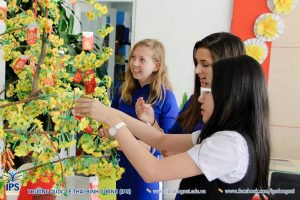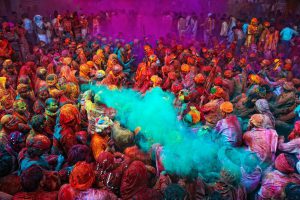Whether you teach a language or just want to share more of the world with your students, talking about and celebrating holidays from other countries is a great way to do so without having to leave the classroom. Mark your calendars and learn more about the days below.
Mardis Gras—Tuesday, February 13

Elias Tapley
Mardis Gras, or Fat Tuesday, begins after Three Kings Day—the holiday commemorating the visit of the Magi—and ends on the day before Ash Wednesday. Mardis Gras is famous for its Carnival celebrations, especially in New Orleans, where it has been celebrated since 1837.

Image: Getty
Since then, the holiday has grown to become a main attraction for the city—in fact, the city’s population doubles in the five days before Ash Wednesday, when tourists flood in to enjoy the parades, wearing costumes, masks, and beads. And while the city has become synonymous with the celebration, many other cities with French origins celebrate the holiday, such as Pensacola, Florida.
Senior International Program Specialist and former French teacher Elias Tapley has tips for bringing Mardis Gras to your classroom:
“I did a lot of cooking with my French students (crêpes, cordon bleu, etc.) so we made Galette des Rois or King Cake for the period of time that starts with Epiphany on January 6 and ends with Mardi Gras in February. It is a puff pastry filled with almond butter cream that traditionally has a tiny baby Jesus figurine hiding inside.
“Students would learn about the cultural significance and customs in France and Francophone countries surrounding Epiphany, Mardi Gras, and the period in between that is called Carnivale. I introduced them to vocabulary related to these holidays and the recipe for the Galette des Rois along with other typical cuisine. Students would then present on what they learned—and eat cake they baked—during a winter multicultural night.”
Tet (Vietnamese New Year)—Friday, February 16
Tet, short for Tet Nguyen Dan, is the Vietnamese New Year. It’s celebrated on a different date each year—it goes by the lunar calendar, based on the first night of the first moon after the sun enters Aquarius.
Tet is a large and significant celebration in Vietnam, and is considered an opportunity for renewal and rebirth. People celebrate by sweeping up (for a fresh start) and visiting relatives. On New Years’ day, they fill the streets and make as much noise as possible with firecrackers and drums, to ward off evil spirits.

Emily celebrating Tet with her students in Vietnam

Emily Kanakis
Tet is special because it is the date of everyone’s birthday—in Vietnam, newborn babies turn one on Tet, regardless of the date of the year they were born. Children are given red envelopes with “Lucky Money” to celebrate.
International Program Specialist and former teacher in Vietnam Emily Kanakis has tips on how to celebrate Tet in your classroom:
- Teach how the lunar calendar works. Then, do a group activity to figure out when the next Tet happens for the next two years.
- Give your students red envelopes with chocolate coins, and explain why Tet is so important to children. Have the class figure out their “Vietnamese age.”
- Clean up the classroom to get the year started off right!
- Have a classroom Tet party to celebrate! Decorate the classroom in red, and share traditional Vietnamese foods, like sticky rice cakes.
Holi (Festival of Colors)—Friday, March 2
Holi is an ancient Hindu festival primarily celebrated in India. Also known as the “festival of love,” Holi celebrates the triumph of good over evil, and falls on a different date each year in accordance with the Vikram Samvat—the Hindu calendar.

Image: Smithsonian
The celebration begins the night before Holi—called Holika Dahan—with a bonfire to celebrate the death by fire of the evil demoness Holika. The true celebration begins the next morning with the festival of colors, an enormous color fight in which celebrants drench each other in colored powder. They finish the holiday off in the evening by visiting family and friends.
A full Holi celebration at your school can be difficult logistically, but if possible, you can plan a bonfire at your school and/or a water balloon fight with food coloring outside. Other, cleaner ways to bring the holiday into the classroom are:
- Teach your students about the Hindu calendar, and have them learn the names of the months of the calendar.
- Make Gujia, a traditional sweet dumpling, or Puran Poli, a sweetbread, and share them with your class.
- Arrange for your class to participate in a Color Run.
- Assign each student a Hindu god or goddess to research and present to the class.
- Show students a video of a Holi celebration in India.
- Give an introduction to the Hindi language, and practice writing the script.
Have other ideas for bringing holidays into your classroom? Let us know on Twitter!

